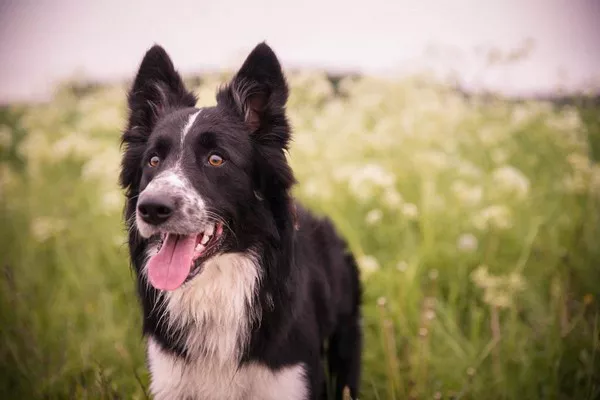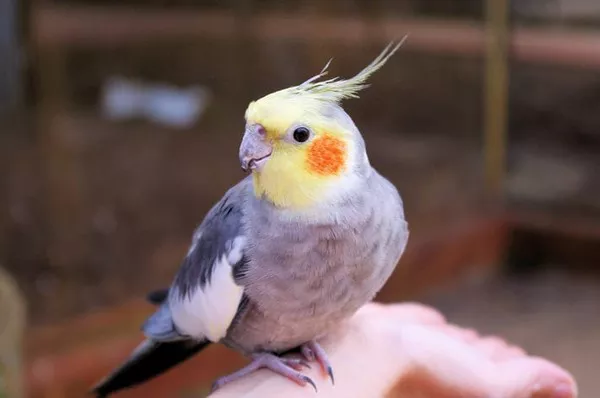Dogs are known for their playful, affectionate behavior, and one of the most endearing actions they perform is stretching when they see you. Whether you’re coming home after a long day, waking up in the morning, or simply walking into the room, your dog might suddenly drop into a low, bow-like stretch. It’s not just an adorable quirk, but a behavior with various meanings that ties into the dog’s natural instincts, physical health, and social needs. Understanding why dogs stretch when they see you can deepen the bond you share with your pet and provide valuable insight into their emotional and physical state.
In this article, we’ll explore the reasons behind this behavior, breaking it down into different contexts and offering some tips on interpreting your dog’s body language. We’ll also discuss how stretching relates to your dog’s overall well-being and how to ensure your dog stays happy and healthy.
The Classic “Play Bow”
The most common form of stretching seen in dogs is the “play bow.” This posture involves the dog lowering its front end while keeping its rear end raised. The tail is often wagging enthusiastically, signaling friendliness and a readiness to engage in play.
Why do dogs use this stretch to communicate with you?
Social Signaling: The play bow is a form of invitation, a clear signal that your dog wants to engage with you. In the wild, dogs often use this gesture to show they are not a threat. The stretch opens up a form of non-verbal communication that invites interaction, whether that means a game of fetch, tug-of-war, or simply some quality bonding time.
Excitement and Happiness: If your dog stretches when it sees you after a long day, it’s likely expressing joy and excitement about your presence. The stretching releases tension and serves as an energy booster, signaling that the dog is emotionally charged and ready for interaction.
Stretching as a Physical Need
While the play bow is typically used as a form of communication, stretching can also be a physical necessity for your dog. Just like humans, dogs need to stretch their muscles to maintain flexibility and prevent stiffness.
How does stretching help your dog physically?
Relieving Muscle Tension: Dogs, especially those who are active or spend a lot of time running, jumping, and playing, can experience tight muscles. Stretching helps to release this tension and keeps their muscles from becoming too stiff or sore.
Maintaining Joint Health: Stretching promotes joint flexibility and health, particularly in older dogs or those prone to joint problems like arthritis. If your dog has been resting or lying down for a while, it might stretch to get the blood flowing back into the muscles and joints, reducing the risk of stiffness and discomfort.
Waking Up: Just like humans, dogs also experience a physical “wake-up” stretch. If your dog stretches after a nap or when you wake them up, it’s a natural way of getting their body ready for activity. The stretch helps increase blood flow, making them feel more alert and energized.
Stretching as a Sign of Affection
Dogs use stretching as a form of positive body language. The act of stretching can be a sign that your dog feels safe, secure, and comfortable in your presence.
How does stretching relate to affection?
Comfort in Your Presence: When your dog stretches, it is often a sign of relaxation. If they stretch after seeing you, it could be an indication that they trust you and feel comfortable in your company. Dogs are not just stretching to relieve physical tension but are also doing so as a way of showing affection or love.
Greeting Rituals: Many dogs have greeting rituals when they see their owners. Stretching could be part of the routine, demonstrating eagerness to spend time with you. In these instances, the dog’s stretch may be accompanied by a wagging tail, a happy bark, or even a jump. All these behaviors work together to show how excited they are to see you.
Dogs Stretching as Stress Relief
Stretching can also serve as a way for dogs to deal with stress or anxiety. Dogs, like people, experience emotional ups and downs. Stretching may be one way they relieve tension from a stressful situation.
Why does stretching help with stress?
Releasing Anxiety: Stretching can release physical tension caused by stress or anxiety. If your dog has been through a stressful experience, like being left alone for a period or going to the vet, it may stretch as a way to alleviate the discomfort and calm down. Stretching can also be a coping mechanism if your dog is nervous or unsure about a new situation.
Calming Behavior: When a dog is anxious, it may exhibit different calming signals, such as yawning, licking, or stretching. This stretching behavior serves as a way to signal that the dog is trying to settle down and relax. It can help your dog regain composure in situations that are making them feel uncertain or fearful.
Stretching for Social Bonding
Dogs are highly social animals, and their interactions with you are crucial for their well-being. Stretching when they see you may be a way of strengthening that social bond.
What role does stretching play in bonding?
Non-Verbal Communication: As previously mentioned, stretching in the form of a play bow can be a way of communicating with you in a friendly, non-threatening way. This is particularly true when you are entering the room after being gone for a while. Your dog sees you as a companion, and stretching serves as a way to re-engage and re-establish that social connection.
Shared Experiences: When your dog stretches in your presence, it can be seen as part of the social rituals you share. It’s their way of inviting you into their world, signaling that they are relaxed and ready for interaction. This behavior strengthens the emotional connection between you and your pet.
How to Interpret Your Dog’s Stretching
Interpreting your dog’s stretching can help you better understand their emotional state. Here are some ways to interpret the stretch based on the context:
Playful Stretch: If your dog is wagging its tail or making eye contact with you while stretching, it’s a clear invitation to engage in play. This is a sign of excitement and happiness. The play bow may be accompanied by other signs of playfulness, like jumping or barking.
Stretching After Sleep: If your dog stretches right after waking up, it is a normal behavior to help them shake off stiffness and get their body ready for the day. This is a positive sign of good physical health and flexibility.
Stretching in a New Environment: If your dog stretches when exposed to unfamiliar surroundings or after a stressful event (like a visit to the vet), it might be a way of calming themselves. Look for other signs of anxiety, such as panting, pacing, or cowering, to understand if the stretch is part of stress relief.
Stretching in Older Dogs: Older dogs may stretch more often due to stiffness or joint pain. This could indicate that they are trying to alleviate discomfort. If you notice that your senior dog is stretching frequently and seems stiff, it may be time to consult a vet for joint health concerns.
Is There Anything You Should Do When Your Dog Stretches?
While stretching is generally a healthy and normal behavior, there are a few things to consider to ensure your dog’s stretching habits are not related to health issues.
Regular Exercise: Ensure that your dog is getting enough physical activity. Regular exercise, including walks, playtime, and mental stimulation, can help prevent muscle stiffness and joint issues. If your dog is not getting enough movement, they may stretch more often due to tight muscles or boredom.
Check for Signs of Pain or Discomfort: If your dog is stretching excessively or seems to be struggling to stretch, it may be a sign of pain. Pay attention to any other signs such as limping, difficulty standing, or reluctance to move. If you suspect your dog is in pain, it’s important to consult a veterinarian for an evaluation.
Monitor for Stress or Anxiety: If you notice that your dog only stretches in stressful situations, it may be an indicator that they are experiencing anxiety. Dogs can suffer from separation anxiety, fear-based behaviors, or other emotional concerns. If you are concerned, a consultation with a professional dog trainer or veterinarian might be helpful.
Conclusion
Stretching is a common and natural behavior that serves a variety of purposes in your dog’s life. Whether your dog is stretching to signal play, relieve tension, show affection, or reduce stress, it is an essential part of their physical and emotional well-being. Understanding the reasons behind the stretching behavior helps you recognize when your dog is feeling playful, relaxed, or even anxious.
Paying attention to your dog’s body language, including how they stretch, will strengthen your bond and help you meet their needs more effectively. By fostering a supportive environment where your dog can express themselves freely, you contribute to their overall health, happiness, and comfort.
So, the next time you see your dog stretching when they see you, remember that it’s not just a random act – it’s a clear, multi-purpose behavior that reflects your dog’s physical needs, emotional state, and desire for connection.
Related Topics:


















